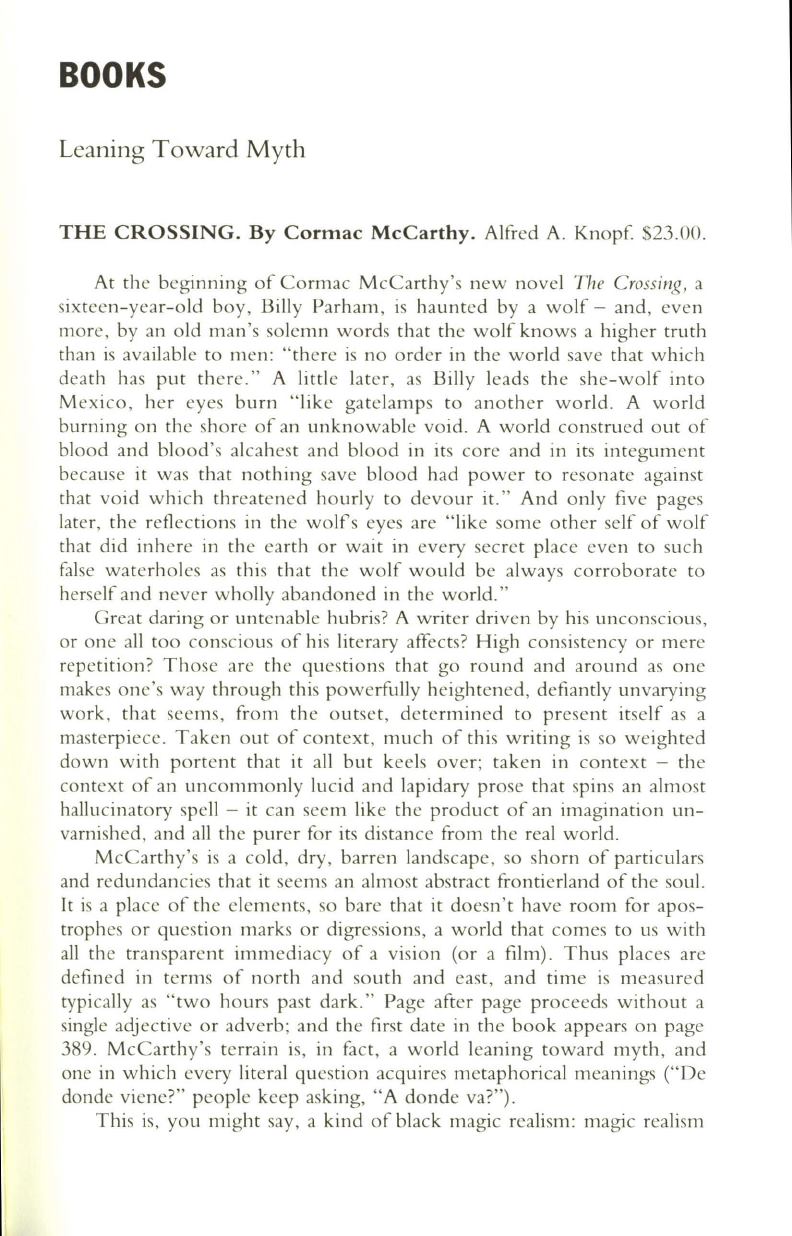
BOOKS
Leaning Toward
Myth
THE CROSSING. By Cormac McCarthy.
Alfred A. Knopf. $23.00.
At the beginning of Cormac McCarthy's new novel
The Crossing,
a
sixteen-year-old boy, Billy Parham, is haunted by a wolf - and, even
more, by an old man's solemn words that the wolf knows a higher truth
than is available to men: "there is no order in the world save that which
death has put there." A little later, as Billy leads the she-wolf into
Mexico, her eyes burn "like gatelamps to another world. A world
burning on the shore of an unknowable void. A world construed out of
blood and blood's alcahest and blood in its core and in its integument
because it was that nothing save blood had power to resonate against
that void which threatened hourly to devour it." And on ly five pages
later, the reflections in the wolfs eyes are "like some other self of wolf
that did inhere in the earth or wait in every secret place even to such
false waterholes as this that th e wolf would be always corroborate to
herself and never wholly abandoned in the world."
Great daring or untenable hubris? A writer driven by his unconscious,
or one all too conscious of his literary affects? High consistency or mere
repetition? Those are the questions that go round and around as one
makes one's way through this powerfully heightened, defiantly unvarying
work, that seems, from the outset, determined to present itself as a
masterpiece. Taken out of context, much of this writing is so weighted
down with portent that it all but keels over; taken in context - the
context of an uncommonly lucid and lapidary prose that spins an almost
hallucinatory spell - it can seem like the product of an imagination un–
varnished, and all the purer for its distance from the real world.
McCarthy's is a cold, dry, barren landscape, so shorn of particulars
and redundancies that it seems an almost abstract frontierland of the sou l.
It is a place of the clements, so bare that it doesn't have room for apos–
trophes or question marks or digressions, a world that comes to us with
all the transparent immediacy of a vision (or a film). Thus places are
defined in terms of north and south and east, and time is measured
typically as "two hours past dark." Page after page proceeds without a
single adjective or adverb; and the first date in the book appears on page
389. McCarthy's terrain is, in fact, a world leaning toward myth, and
one in which every literal question acqu ires metaphorical meanings ("Dc
donde viene?" people keep asking, "A donde va?").
This is, you might say, a kind of black magic realism: magic realism


